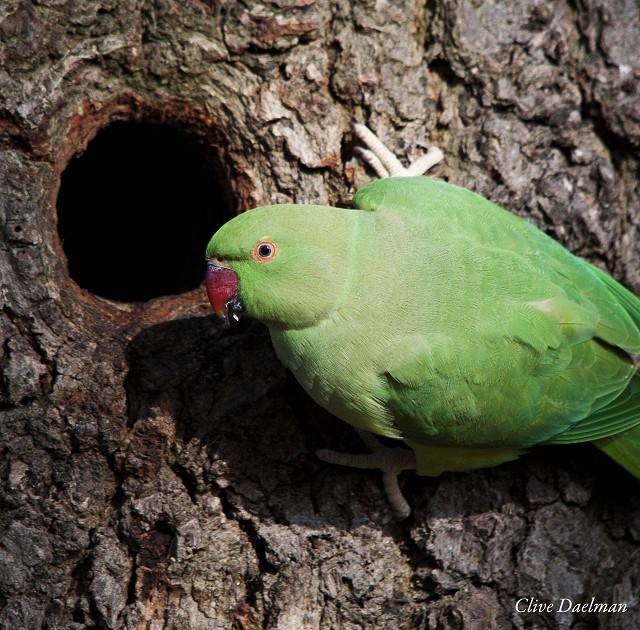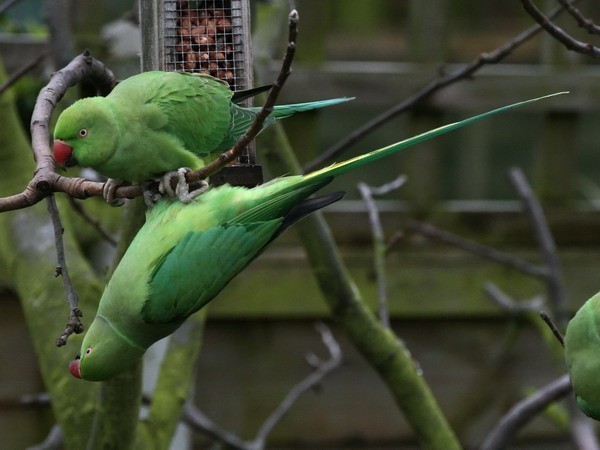Parakeet feathers needed
The UK's wild Ring-necked Parakeets provide an excellent opportunity to study how invasive populations experience rapid population growth from a small number of individuals without experiencing any genetic side-effects — such as inbreeding depression, reduced survival rates and decreased disease resistance. Many island populations, such as the Mauritius Echo Parakeet, are unable to do this and require intensive conservation management to save the populations from extinction. I am investigating the genetic origin and makeup of Ring-necked Parakeets in the UK, to see what lessons can be learnt from the species to inform future conservation efforts. It's also important to understand any detrimental impacts parakeets may have, such as possible diseases, again with a view to mitigation.

Ring-necked Parakeet, Richmond Park, Greater London (Photo: Mr Clive Daelman)
To enable me to unravel their genes, I need to collect shed feathers of Ring-necked Parakeets from around the country, from parks, gardens and roost sites. By analyzing DNA extracted from feathers found across the UK, I hope to reconstruct the genetic origin of these birds and identify patterns in the genetic diversity within the population.

Ring-necked Parakeet, Dumpton, Kent (Photo: Dylan Wrathall)
Here's where you can help. If you come across any parakeet feathers, please collect them and post them (flat and dry in an envelope) to me at the DICE address below, including details of where and when you found them. If you find feathers from more than one location, it would be ideal if you could place them in separate ziplock bags or envelopes — I would be glad to send you Ziploc bags if required. If you would like to include your contact details too, I will then be able to keep you updated on my research as part of my parakeet contact network.
More details on Hazel's work can be found at www.wildparakeetsuk.co.uk and any feathers found should be forwarded to:
Durrell Institute of Conservation and Ecology
School of Anthropology and Conservation
Marlowe Building
University of Kent
Canterbury
Kent
CT2 7NR

